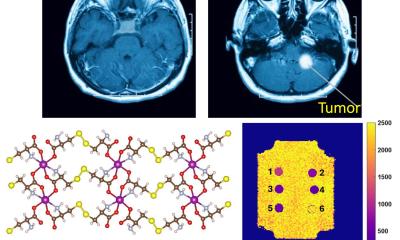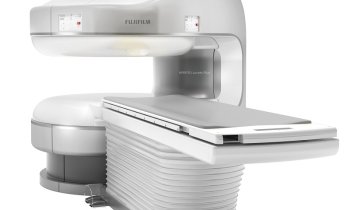Imaging pregnant women
ECR 2012 - Vienna news and views, Mark Nicholls’ roundup from Vienna
Figures suggest that imaging of pregnant women increased by 121% between 1997 and 2008, even though radiologists face several critical challenges when imaging these patients.

Choosing the best modality, ensuring the dose is not too high to damage the foetus yet ensuring a correct diagnosis is obtained and acknowledging that two – not just one – patients are being treated, are all major considerations. The Imaging During Pregnancy session, chaired by Professor Monika Bekiesinska-Figatowska (Institute of Mother and Child, Warsaw, Poland), also aired the challenges in cases of polytrauma and of diagnosing pulmonary embolism.
Ultrasound and MRI foetal risks
Dr Magdalena Wozniak (Medical University of Lublin, Poland): ‘Adverse effects of ultrasound depend on the intensity of the beam, duration and frequency,’ she pointed out. ‘There are thermal and non-thermal effects as the human embryo and foetus may be vulnerable to elevated temperatures.’ There is a greater risk of inducing thermal effects in the second and third trimester while non-thermal effects are more significant in early gestation, Dr Wozniak explained. Steps to keep the foetus safe during ultrasound examinations include keeping the thermal index below one, using the lowest output for the shortest possible time and limiting the exposure time. MRI is, she added, a ‘well-proven, wellestablished’ modality for imaging the foetus. ‘Foetal MRI is recognised as a safe modality and no abnormality effects from foetal MRI have been demonstrated. MRI contrast agents should not be given routinely but can be given if essential to get the diagnosis.’ To keep the foetus safe during MRI, it is important to keep the SAR (Specific Absorption Rate) under 2 w/kg WBA, limit examination time, keep temperature rise to a minimum and always to perform foetal MRI under the supervision of a radiologist, she warned.
In looking at the risks of radiation and contrast media to the mother and foetus, Professor Daniela Prayer, head of the division of Neuroradiology and Musculoskeletal Radiology, Medical University of Vienna, said that, when scanning, the dose should not exceed 100mGy and that termination of pregnancy in foetal doses of less than 100 mGy was not justified. As pregnancy proceeds, she pointed out that the risk of malformation from an examination reduces. In early pregnancy cases, Professor Prayer said that ultrasound and MRI should be the preferred modality for examination and contrast media can be applied.
Polytrauma in pregnancy
Radiologist Professor Andras Palko (University of Szeged, Hungary): ‘When polytrauma in pregnancy occurs you need to provide for two patients – the mother and foetus – which is a very complicated situation and requires a multidisciplinary approach. However, we have to remember there is no foetal survival without maternal survival, so the mother’s condition takes priority. The exception is in the advanced stages of the third trimester where poor maternal prognosis may mean saving the foetus by caesarean section.’
Professor Palko pointed out that, when polytrauma occurs in pregnancy, rapid radiological examination is essential and CT has the advantage of covering body segments in a short time, though early ultrasound evaluation can rapidly triage unstable patients. ‘Ultrasound is the first method off choice but, in polytrauma cases, CT is an indispensable tool.’
Pulmonary embolism
Dr Anna Larici (Dept. of Radiology, Catholic University, Rome) pointed out that that pulmonary embolism in pregnancy is a leading cause of maternal mortality in the developed world – often due to delayed diagnosis. Imaging, she explained, can play a critical role in addressing this.
02.05.2012











